37 ray diagram for concave lenses
If an object is placed further from the lens than the focal length f then a concave lens ray diagram will be drawn in the following way: Concave lenses only produce virtual images Start by drawing a ray going from the top of the object through the centre of the lens. This ray will continue to travel in a straight line When a ray, passing through focus strikes concave or convex lenses, the reflected ray will pass parallel to the principal axis. Image Formation by Concave and Convex Lenses: Convex Lenses. When an object is placed at infinity, the real image is formed at the focus. The size of the image is much smaller than that of the object.
The takeaway here is that a concave lens will produce an upright, virtual image on the object side of the lens. Problem 4 : choose the correct ray diagram Now we have a concave mirror, which can either create a virtual upright image or a real inverted image depending on the location of the object.
Ray diagram for concave lenses
Draw a ray diagram for a concave lens that has a focal length of 108 cm when an object is. The ray parallel to the principal axis passes through the focal point after refraction by the lens. If an object is on one side of the concave lens the concave lens can form the image of the object. Best Explanation for Ray diagrams for the concave lens and Drawing concave lens with the help of a compass. Here you have the ray diagrams used to find the image position for a diverging lens. A diverging lens always form an upright virtual image. Ray diagrams are constructed by taking the path of two distinct rays from a single point on the object: A ray passing through the center of the lens will ...
Ray diagram for concave lenses. The following diagrams show the ray diagram for a concave lens. With a concave lens, the image will always be diminished, the right way up and virtual. Concave Lenses Draw a ray diagram to show how an image is formed by a concave lens. Describe the properties of an image produced by a concave lens. April 26, 2020 - For a Concave lens,There are only 2 casesThey areObject is Placed at InfinityObject is Placed between Infinity and Optical CenterCase 1 - Object is Placed at infinityIn this Case, Object is kept far away from mirror (almost at infinite distance)So, we draw rays parallel to principal axisSince ray pa Convex Lens Ray Diagrams For lenses, the following three rays are typically used in ray diagrams. Keep in mind that an inflnite number of rays actually form the image. Ray # 1 For a lens, the flrst ray starts from the top of the object and extends parallel to the optical axis to the center of the lens. This ray, for a converging (convex) lens, Concave Mirror Ray Diagram lets us understand that, when an object is placed at infinity, a real image is formed at the focus. The size of the image is much smaller compared to that of the object. When an object is placed behind the center of curvature, a real image is formed between the center of curvature and focus.
With a concave lens, the image will always be diminished, the right way up and virtual. Draw a ray diagram to show how an image is formed by a concave lens. Describe the properties of an image produced by a concave lens. Draw different ray diagrams with the object at different places in relation to the focus and find out where the image appears. The diagram shows a thin concave lens. The lens is symmetrical. The point marked P is one of the foci of the lens. Using the grid, determine which of the points (I, II, III, or IV) is the other focus of the lens. Answer Light rays can pass through the lens from the left side to the right side or in the opposite direction. A concave lens ray diagram is a simple way of visualising the path that light rays take when passing through a concave lens. To draw a ray diagram you only need to draw two ray lines. This is sometimes referred to as "the two rules of refraction for diverging lenses". But you really don't need to remember this, the only thing to remember is: The ray diagrams for concave lenses inside and outside the focal point give similar results: an erect virtual imagesmaller than the object. The image is always formed inside the focal length of the lens. Ray diagrams for lenses Index Lens concepts HyperPhysics*****Light and Vision R Nave Go Back Ray Diagram for Two Lenses Ray diagrams for lenses
In a ray diagram, a convex lens is drawn as a vertical line with outward facing arrows to indicate the shape of the lens. The distance from the lens to the principal focus is called the focal... Jared Loggins, visiting assistant professor at Amherst College of Black Studies and Political Science, is the author of a new book on King: Prophet of Discontent Martin Luther King Jr. and the Critique of Racial Capitalism · Find information about the College’s response to the evolving situation ... Convex and Concave Lenses are Spherical Lenses. We look at the Image Formation by these spherical lenses using ray diagrams. Description of how to draw ray diagrams for diverging lenses for grade 10 science.
Hi ! In this animation of CONCAVE Lens, you get a good confidence to draw Ray Diagrams for various Object Positions. The aim is to have a clear understanding...
Please note: Some books inform you that there is one more rule for drawing ray diagrams and that is: from the object, draw a line so that it travels towards the principal focal point on the opposite side of the lens. This ray will then refract through the concave lens and travel parallel to ...
"A lens is an optical device which transmits and refracts light, converging or diverging the beam. A simple lens consists of a single optical element. A compound lens is an array of simple lenses (elements) with a common axis; the use of multiple elements allows more optical aberrations to be corrected than is possible with a single element. Lenses are typically made of glass or transparent ...
Ray tracing a convex lens: object inside focus The image appears larger (and farther away) than the object. This is a magnifying glass. (Remember: a magnifying glass is a convex lens.) Aside: near-sighted people need concave/diverging lenses; can a marooned myopic start a fire with his eye-glasses?
Here in this post, you will get Ray Diagrams for Images formed by convex & concave lenses as a Quick Reference. Image formation by lenses is an interesting topic of the Light chapter. Here along with the ray diagram, you will get the related details like Object position, image position, and nature of the image.
Learn about and revise lenses, images and ray diagrams with GCSE Bitesize Physics.
While drawing a ray diagram, a vertical line with arrows that face outwards represents a convex lens. The distance between the lens and the focus is known as the focal length. A ray diagram shows the path that the ray of light follows while passing through the lens.
The ray diagram above illustrates that the image of an object in front of a double concave lens will be located at a position behind the double concave lens. Furthermore, the image will be upright, reduced in size (smaller than the object), and virtual.Converging Lenses - Ray DiagramsImage formation by convex and concave lens ray diagrams
The theme of this unit has been that we see an object because light from the object travels to our eyes as we sight along a line at the object. Similarly, we see an image of an object because light from the object reflects off a mirror and travel to our eyes as we sight at the image location of the object. From these two basic premises, we have defined the image location as the location in space where light appears to diverge from. Ray diagrams have been a valuable tool for determining the path taken by light from the object to the mirror to our eyes. In this section of Lesson 3, we will investigate the method for drawing ray diagrams for objects placed at various locations in front of a concave mirror.
A concave lens has a focal point {eq}f = 4 {/eq} cm. Display a ray diagram of a figurine placed at a distance {eq}d_o = 6 {/eq} cm from the lens. answer choices Answers:
The Physics Classroom » Curriculum Corner » Reflection and Mirrors » Ray Diagrams for Concave Mirrors. The document shown below can be downloaded and printed. Teachers are granted permission to use them freely with their students and to use it as part of their curriculum. Visit the Usage Policy page for additional information.
The ray nature of light is used to explain how light refracts at planar and curved surfaces; Snell's law and refraction principles are used to explain a variety of real-world phenomena; refraction principles are combined with ray diagrams to explain why lenses produce images of objects.
Concave Lens Ray Diagram Template. Guess you want to draw a professional looking concave lens ray diagram? Try Edraw template which could be applied easily. Just go for more optional ray diagram symbols in the Edraw diagram design library for better drawing. Lab Apparatus List. 64703. 211. Plant Cell Diagram.
One goal of a ray diagram is to determine the location, size, orientation, and type of image that is formed by the double convex lens. Typically, this requires ...
Concave Lens - Ray diagram Uses of Concave and Convex Lens Sign convention for Convex and Concave Lens Lens Formula Power of a lens NCERT Questions → Class 10. Chapter 10 Class 10 - Light - Reflection and Refraction (Term 1) Concepts NCERT Questions ...
Ray diagram for an object viewed through a concave lens For an object viewed through a concave lens, light rays from the top of the object will be refracted and will diverge on the other side of...
Double Concave Lens Ray Diagram. A ray diagram is a tool used to determine the location, size, orientation, and type of image formed by a lens. Ray diagrams for double convex lenses were drawn. Because the rays always diverged by a concave lens, the emerging rays do not The concave lens image can still more be explained by a Concave Lens Ray ...
The ray nature of light is used to explain how light refracts at planar and curved surfaces; Snell's law and refraction principles are used to explain a variety of real-world phenomena; refraction principles are combined with ray diagrams to explain why lenses produce images of objects.
Ray tracing diagram for concave lens "In physics, ray tracing is a method for calculating the path of waves or particles through a system with regions of varying propagation velocity, absorption characteristics, and reflecting surfaces. Under these circumstances, wavefronts may bend, change direction, or reflect off surfaces, complicating analysis.
In this worksheet, we will practice drawing diagrams of light rays interacting with concave lenses. Q1: Each of the following diagrams shows a ray entering a thin concave lens. The point marked P is the focal point of the lens. Before the ray enters the lens, it is parallel to the optical axis. It passes through the center of the lens.
Ray 1 and 2. Ray 1 and 3. Ray 2 and 3. Draw the images formation using only two rays need to be adjusted to the object distance from the concave lens. If the object distance from the concave lens is as in the figure above, there are three ways to draw the image formation using only two rays.
10. Draw a ray diagram for a 3.0 cm tall object placed 10.0 cm from a convex lens having a focal length of 15.0 cm. 11. Draw a ray diagram for an object placed 6.0 cm from the surface of a convex lens with a focal length of 12.0 cm. 12. Draw a ray diagram for a concave lens that has a focal length of –10.8 cm when an object is
Shows how to draw the ray diagrams for locating the image produced by a concave lens and a convex mirror. You can see a listing of all my ...
gcsescience.com 29 gcsescience.com · What is the Ray Diagram for a Concave Lens
Concave spherical mirrors and ray diagrams A spherical mirror is a reflective segment of a sphere with a radius of curvature R. It can be convex (outside surface of a sphere) or concave (inside surface). First we will consider a concave spherical mirror. The mirror has a radius R, and the distance from the mirror to the object is p.
The image formed by a single lens can be located and sized with three principal rays. Examples are given for converging and diverging lenses and for the cases where the object is inside and outside the principal focal length · The "three principal rays" which are used for visualizing the image ...
Lenses: Principal Ray Diagram of a Concave Lens
Concepts Concave Lens - Ray diagram Last updated at April 26, 2020 by Teachoo For a Concave lens, There are only 2 cases They are Object is Placed at Infinity Object is Placed between Infinity and Optical Center Case 1 - Object is Placed at infinity In this Case, Object is kept far away from mirror (almost at infinite distance)
Rule 1: A ray of light parallel to the principal axis of the concave lens appears to be coming from focus after refraction through the lens. Rule 2: A ray of light passing through the optical centre of the concave lens goes straight after refraction through the lens.
Here you have the ray diagrams used to find the image position for a diverging lens. A diverging lens always form an upright virtual image. Ray diagrams are constructed by taking the path of two distinct rays from a single point on the object: A ray passing through the center of the lens will ...
Best Explanation for Ray diagrams for the concave lens and Drawing concave lens with the help of a compass.
Draw a ray diagram for a concave lens that has a focal length of 108 cm when an object is. The ray parallel to the principal axis passes through the focal point after refraction by the lens. If an object is on one side of the concave lens the concave lens can form the image of the object.



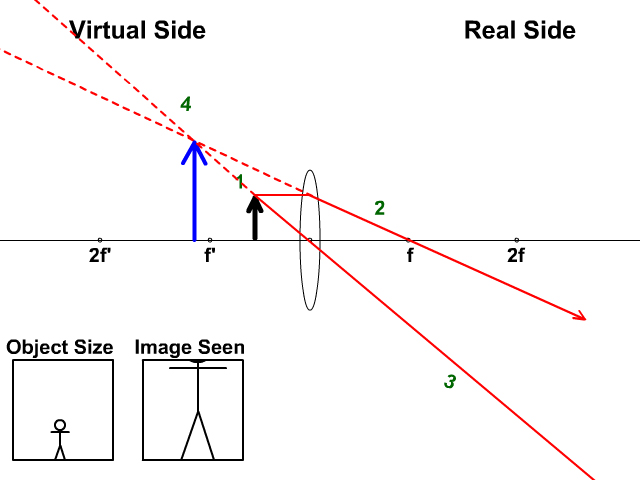

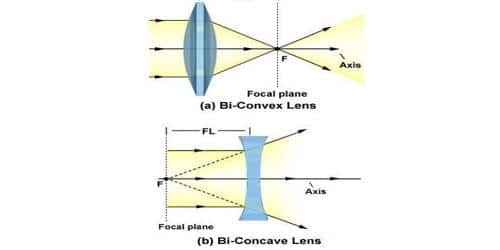


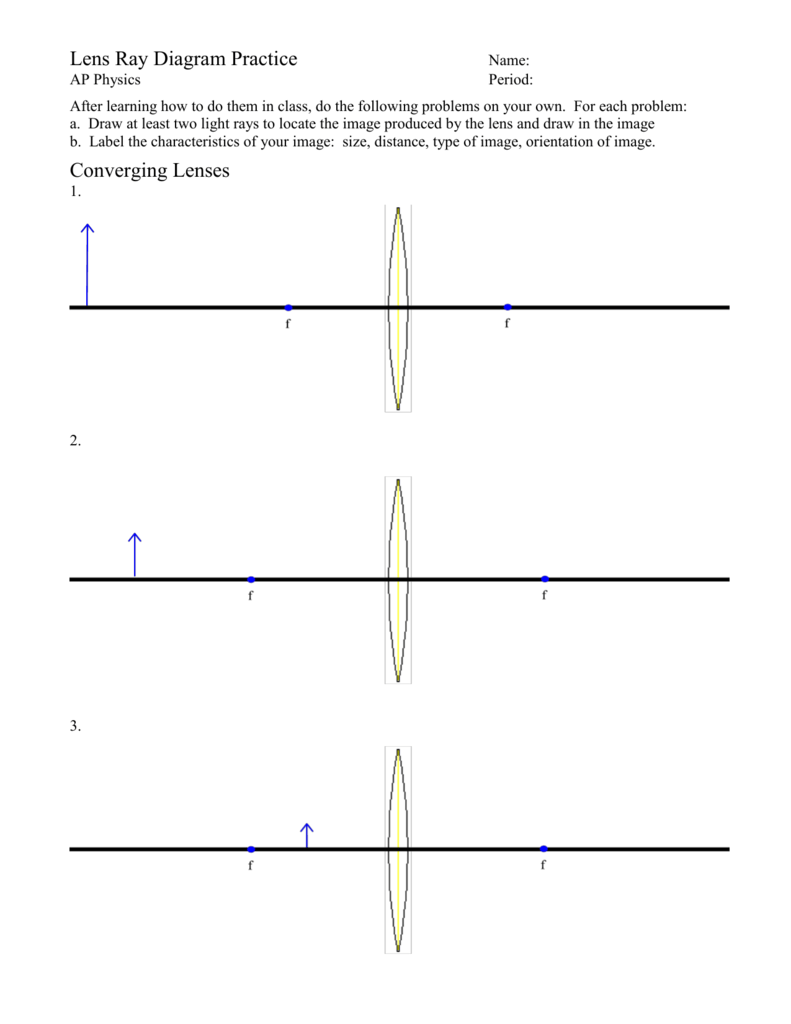





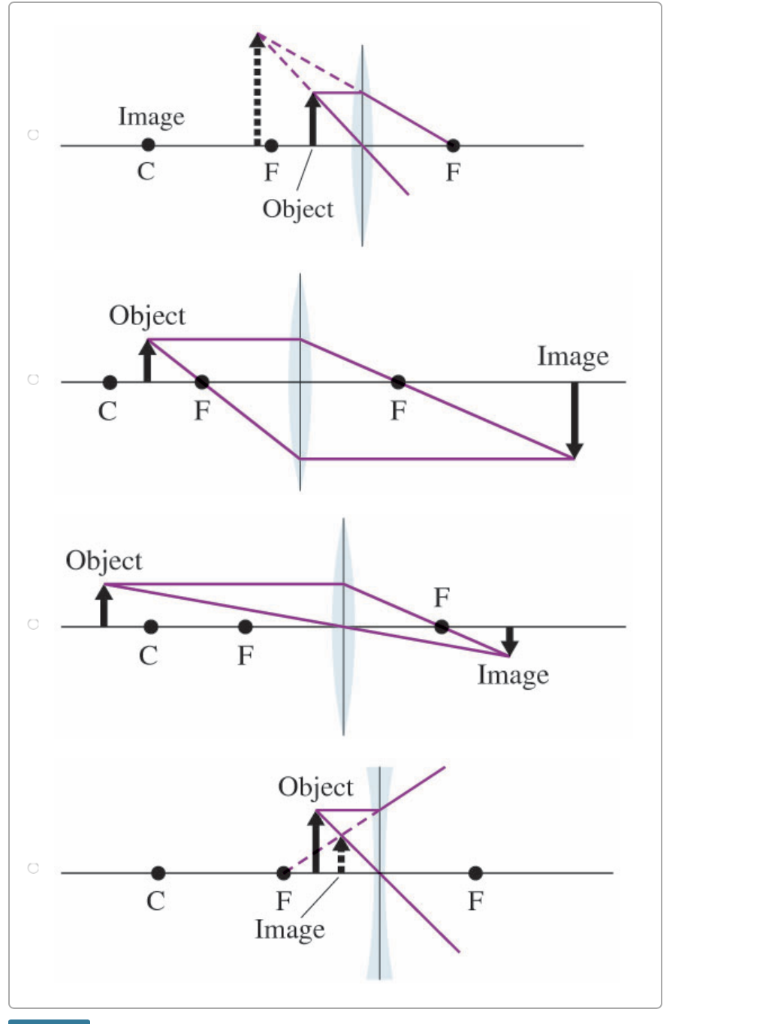







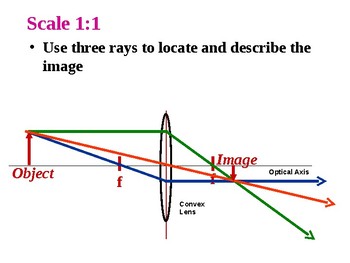
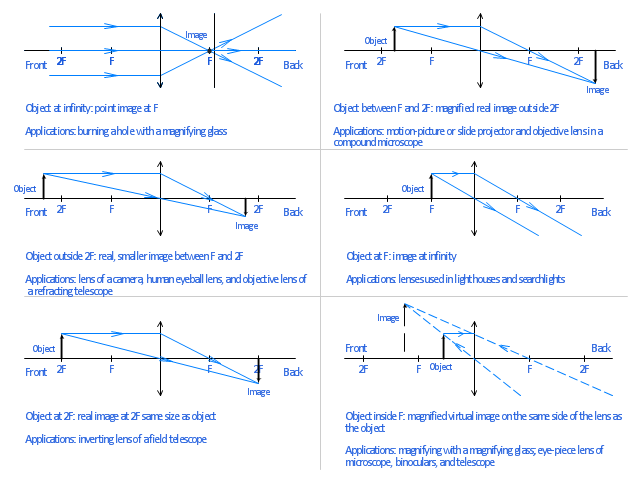
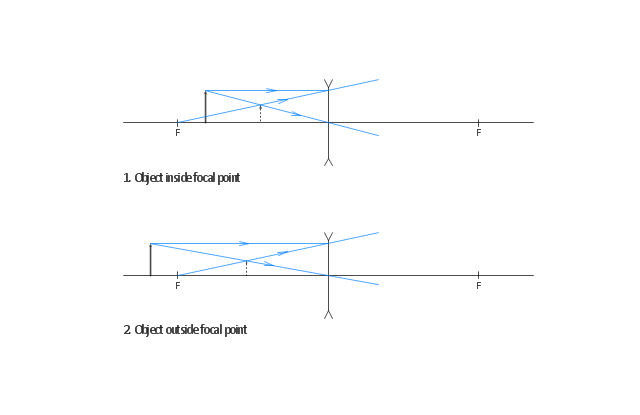
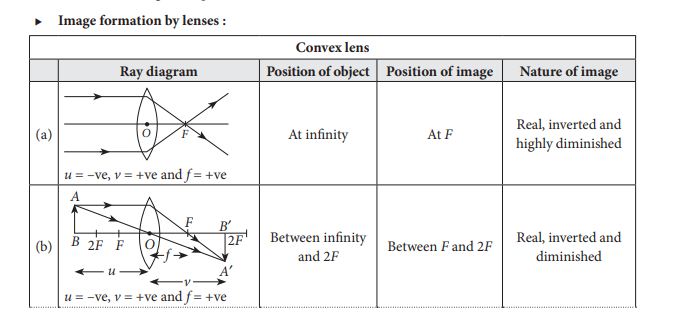





0 Response to "37 ray diagram for concave lenses"
Post a Comment